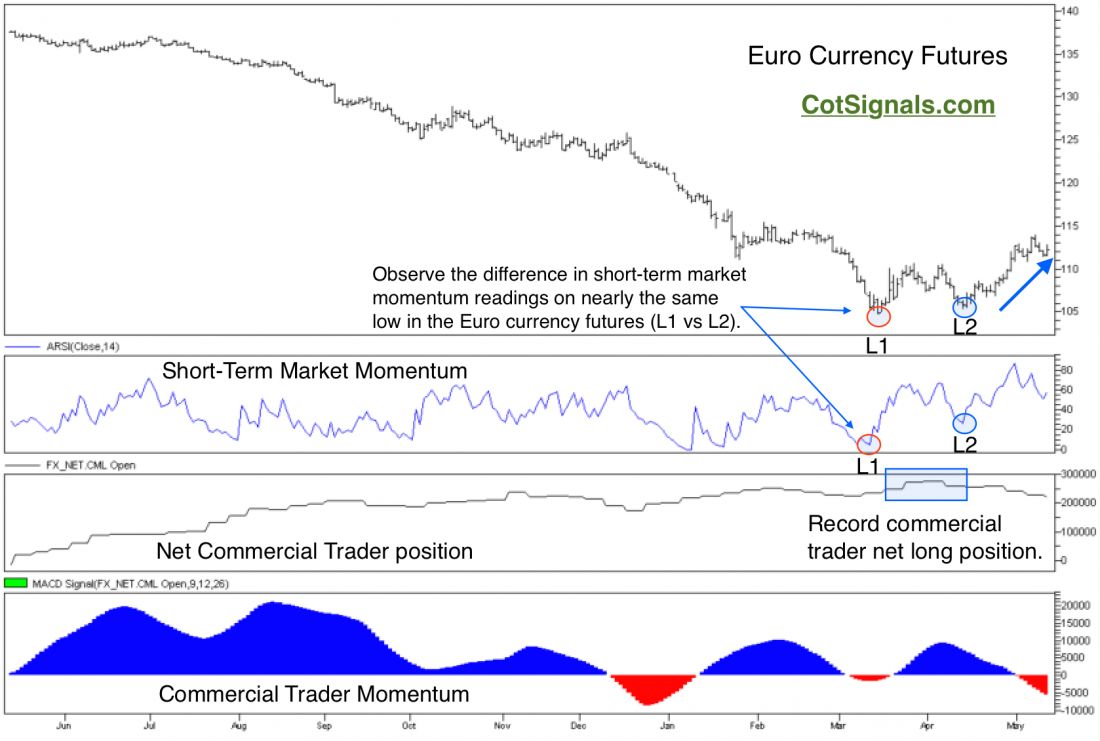The Euro currency was in free fall for nearly a year as the world thought it was heading to parity with the U.S. Dollar. The further it fell, the more they talked about it. Parity appeared to be right around the corner. However, the market’s internals began to rebalance themselves as the commercial traders stepped up to defend even money to the tune of a new net long record position being set as the Euro currency traded down to $1.05 vs. the U.S. Dollar. This is when things got interesting.
Swing trading and trend trading require two different mentalities. Successful trading requires enough self-knowledge to know which category you belong in. It’s hard enough to fight the markets without having to fight your inner nature as well. As a former pit trader, I’ve made some of my biggest trades in less than a minute. I’ve spent the last 15+ years learning to expand my timeframe. This makes me a swing trader. I look for turning points and expect the market to reverse its course. This is also called mean reversion trading or volatility selling, etc. The point is, this strategy is based on reversals rather than continuation.
The chart below is a graphic representation of how we step out to call a turn in a strongly trending market. Begin by comparing L1 and L2 in both the Euro currency future’s chart and the short-term market momentum graph in the second pane. Note two points. First, commercial trader momentum was negative when the market traded down to L1. We only take trades in line with the commercial traders’ momentum. Secondly, note that the commercial trader momentum shifted to positive when they set a new net long record at the beginning of April.
Strong commercial buying into April is reflected in the much higher reading of the Euro currency future’s short-term market momentum indicator relative to the Euro future’s price. Our short-term market momentum indicator is a proprietary calculation but is very similar to stochastics and RSI indicators. The key is that similar lows in the price of the underlying market correspond to a much higher reading of the chosen momentum indicator.

Our twist adds commercial trader confirmation to the standard technical analysis setup. This is a bullish divergence with commercial trader confirmation. This is one of the most powerful setups we’ve identified in our Commitment of Traders research. It has long been our belief that commercial traders, those who produce or, consume the commodity in question have the best collective sense of value in their given markets. Therefore, we use their net position in relative terms, i.e. positive or negative momentum as well as nominal terms i.e. total contracts and record position terms as a proxy for fundamental analysis of the market in question.
Two last pieces of trading advice. One, choose indicators that fit your trading style. Swing traders benefit from overbought/oversold indicators while trend traders may rely on longer term moving averages or ADX readings. Secondly, always know and limit your risk. Trading reversals means placing technically priced protective stops. We use the most recent swing low to set our stop loss price. The premise for the trade is that the market has turned. Therefore, if we’re right, the market will revert to its mean far enough for us to capture a profit prior to making new lows. In this example, the Euro has rallied from $1.07 on the close when the divergence was recorded and the signal was generated to high near $1.15 less than a month later.




